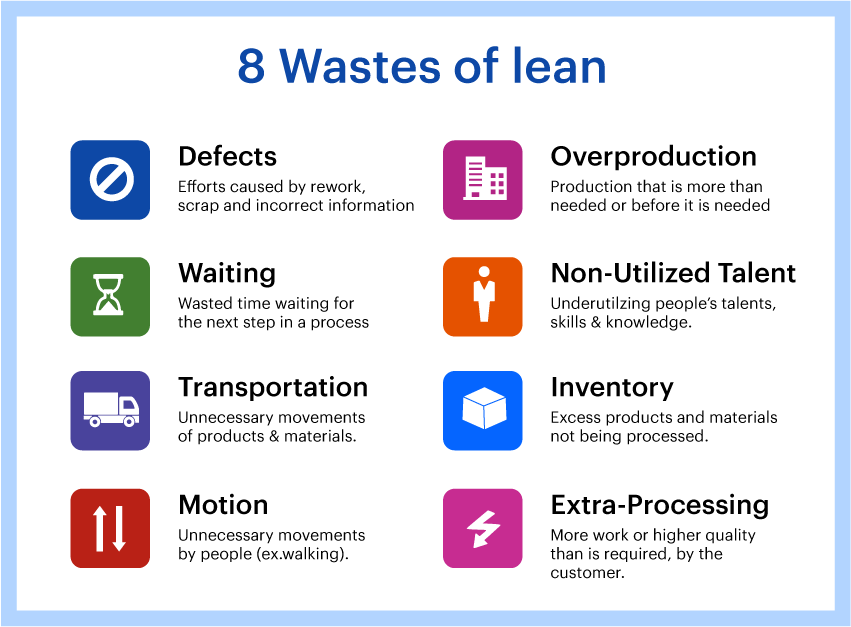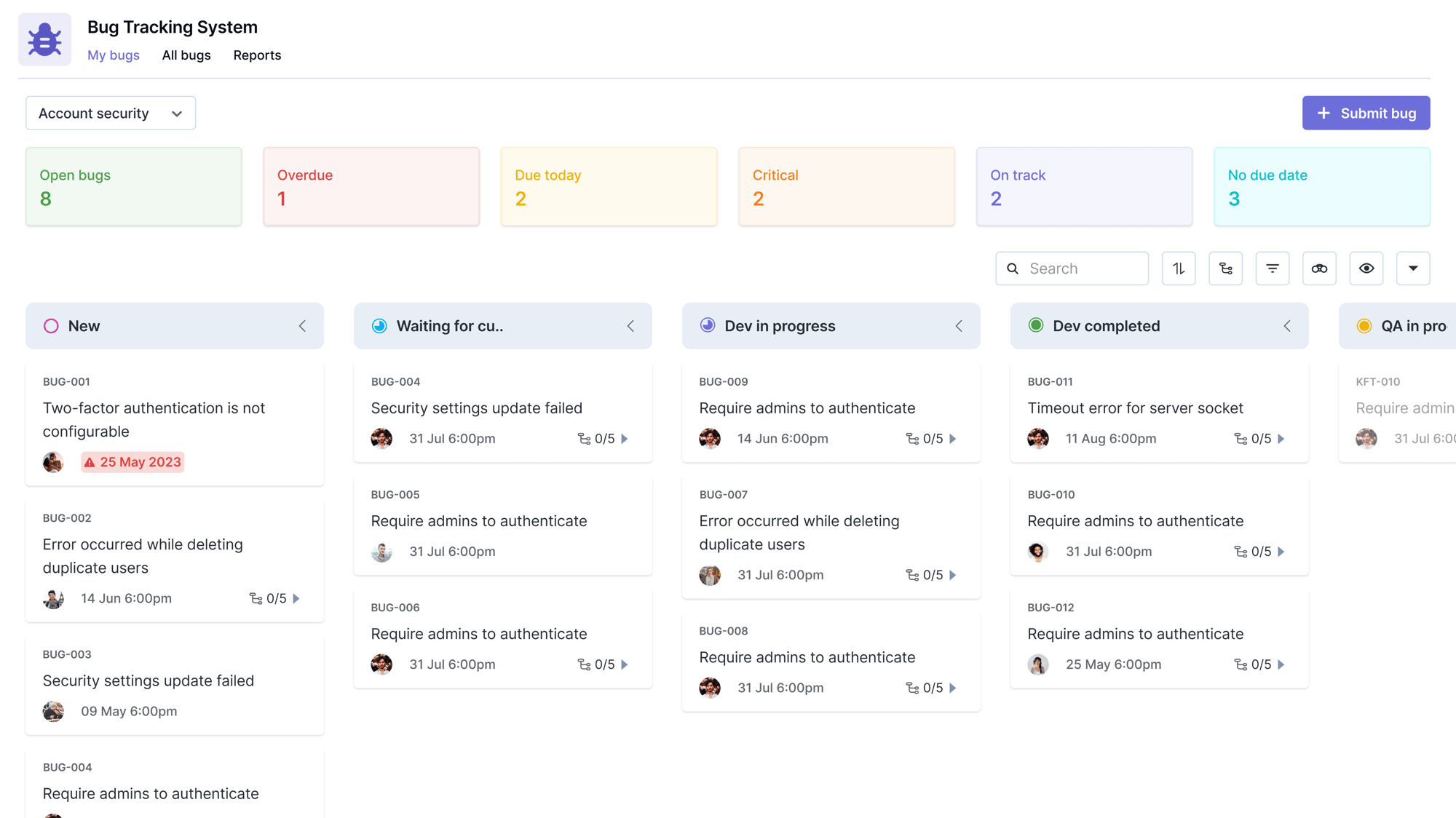Lean project management aims at maximizing business efficiency by the concept of incremental improvements across different stages of the project. This helps in achieving customer satisfaction more efficiently and reducing extra effort by the team to achieve the same results. Lean project management can sometimes be simply referred to as ‘Lean’.
What is waste in lean?
Wastes in Lean Project Management are all those activities/entities which can be removed from the workflow stream without impacting its productivity negatively. Identifying and eliminating lean wastes goes a long way in running a successful project management.
What is value in lean?
The concept of ‘values in Lean’ comes in from project management methodology and is understood as, “everything the customer is willing to pay for in order to achieve satisfaction”. Lean project management is heavily focused on customer satisfaction.
8 wastes of lean explained
- Transport
- Inventory
- Motion
- Waiting
- Overproduction
- Over-processing
- Defects
- Non-Utilized Talent
Once the causes of these wastes are understood clearly, the company can focus on optimizing their processes by eliminating wastes from these processes.
Here’s how these eight wastes of lean impacts efficiency:

1. Transport:
Often resources like people, tools, inventory, and final products are moved from one place to another but no value is added to the product. Unnecessary movement can lead to product damage, wear and tear of equipment, and exhaustion of workers.
In addition to adding overhead costs, excessive movement can negatively impact the quality of parts/products. Also, the excessive inventories seldom contribute to adding value for the customer and improving the product.
Creating an efficient flow of work and enforcing WIP limits can help avoid this kind of waste.
Here is our Customizable Marketing Templates to try for Free:
– Marketing Plan Template to Streamline your Marketing Efforts
– Social Media Calendar Template for Social Media Planning
2. Inventory:
While it’s technically an asset, having more inventory than needed gives rise to many problems. Oftentimes, companies hold additional inventories than they require to sustain a steady flow to meet with sudden customer demands. However, these excessive inventories never add any value for the end customer and end up piling in the stores instead.
Excess inventory is caused by over-purchasing or overproducing. When companies stock themselves for a demand that doesn’t exist, it causes problems like defects, inefficient capital allocation, and overhead costs for storage.
You can cut down excess inventory by:
- purchasing raw materials only when needed and in the quantity needed
- reducing buffers between production steps
- creating a queue system
Cut waste and boost efficiency with workflow software that streamlines processes and reduces delays.
Tired of using Asana?
See why Asana is not efficient to manage projects and why you need a Asana Alternative.
3. Motion:
This categorizes the unnecessary movement of goods and employees. In essence, workers need to be given an environment where their movement is minimized. In the office setting, putting people who work closely together, and ergonomically placing other equipment reduces this kind of waste.
4. Waiting:
Products and tasks need to be in constant motion. If this is not happening, then waiting occurs. This can include when you wait for an email response or approval, in the office setting.
5. Overproduction:
It may be tempting to keep producing as many products as possible when there is idle time. All that the customer is not going to pay for can be categorized as overproduction and hence can be considered a waste.
Enforcing strict work-in-progress limits and following the just-in-time philosophy can help avoid overproduction waste.
6. Over-processing:
All the work which consumes effort and resources but doesn’t add any additional value or add a value that the customer will not pay for is considered over-processing. It refers to doing more work or having more steps in a product or service than what is required by the customer.
Understand the work requirements from a customer’s standpoint to eliminate the wastes of over-processing.
And don’t forget to try our Free and Customizable Templates:
– Content Calendar Template for Strategic Content Planning
– Competitive Analysis Template for Strategic Content Planning
7. Defects:
Defects need to be corrected by working on the product again. In some cases, defects lead the products to be directed towards the scrap. For the purpose of rework, additional space, time, logistics, and manpower are required which leads to a loss in productivity.
Learn more about logistics management software.
8. Non-utilized talent:
Here the resources are not properly utilized in the form of people’s experience, skills, knowledge or creativity where employees unable to make decisions, skilled employees do an unskilled task.
Tired of using Wrike?
See why Wrike is not efficient to manage projects and why you need a Wrike Alternative.
Eliminate Lean wastes with Value Stream Mapping
Value Stream Mapping (VSM) is a Lean management method that helps design a future state by analyzing your current state. It maps the flow of information/material, visually depicts the processes involved and the relationship between them, and eliminates activities that don’t add any value.
One of the main benefits of value stream mapping is the identification and elimination of wastes with the use of project tracking software. In addition to providing insight towards the process line, value stream mapping as also emerged as contributing resources towards better teamwork and collaboration.
The main benefits of value stream mapping in lean can be summarized as follows:
- It helps in determining the actual sources of wastes and contributes towards reducing them.
- Once hand-off points are visualized, teams can work to stop them from occurring again through better communication and improved behavior.
- It helps prioritize those end results which are of value for the customer and hence directs the entire focus towards identified values.
Conclusion
Lean project management is based on identifying waste and highlighting values. Try using Kissflow Project today in your systems to see how it will work for you. Start using the Kissflow Platform today to enhance your project management efficiency.
Your search for Project management has landed you here. Wondering why?
As a user, you'll experience the full value of Kissflow by implementing it across departments for diverse use cases rather than just addressing isolated needs like a project management tool for a single team or department.

.png?width=2000&name=admin%20dashboard%20(2).png)








